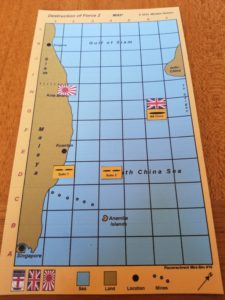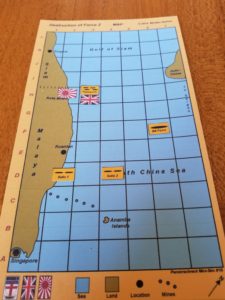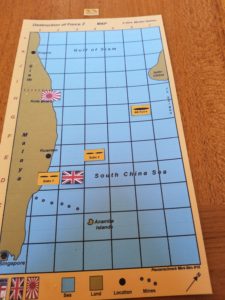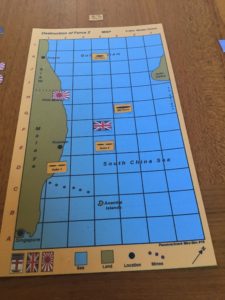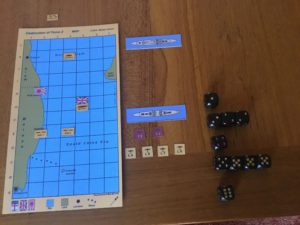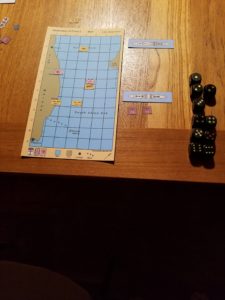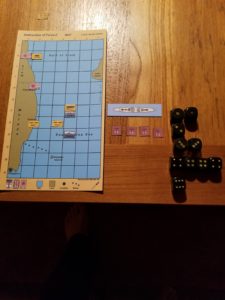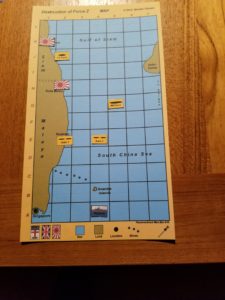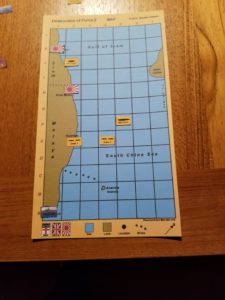My immediate interest in the game was triggered while reading The Royal Navy in Eastern Waters: Linchpin of Victory, 1935-1942 by Andrew Boyd. This is a very interesting and well researched examination of the events leading up to the Force Z debacle. The author dispels many of the convenient myths surrounding the event. Well worth the time and effort, especially if you can pick it up when on Kindle sale for $1.99 or so.
The game reminds me of In Magnificent Style, where you have to push your luck to the limit in order to achieve the intent of Force Z’s sortie. I did this, especially when I reversed course and sailed towards the Japanese battleships, rather than “game” the system and eek out a minimal victory of just a few points.
To compound the British player’s problems, the chances of sinking the Japanese battleships is fairly low, and seemingly not worth the risk, despite the lucrative victory points. Also, the odds of fighter cover actually materializing is relatively low, and anti-aircraft fire is fairly ineffective. In this regard the game reflects the operational and tactical factors leading to Force Z’s destruction.
The optional rules allow the British player some relief; limiting Japanese bomber availability on a per day basis, increasing the Repulse’s capability to avoid torpedoes, and including the carrier Indomitable to provide available and increased air cover. I would consider a house rule making British surface attacks more effective and, perhaps, increasing the victory points awarded for bombarding the Japanese landing sites, since this was the mission of Force Z.
The rules are comprehensive and structured to guide the player. This is good as there are simply too many charts and die rolls to remember. This also enhances replayability because the player can just break out the game, dial up the rules, and start grinding through each turn’s eleven phases. On the other hand, this grinding slows game play. But, a typical game will probably not last too long if Japanese searches are effective. In my instance, the British enjoyed ideal conditions (overcast weather, radio silence, and poor search rolls) and still had little success.
I like the random events and movement charts, and plan to use variations in other gaming situations. The tactical display was fun because it reminded me of playing Midway back in (as it was called then) Junior High.
I’m now thinking about breaking out Avalanche Press’ Strike South and work through the scenario with more detail to reflect the different operational options historically explored by the British before 1942. A comparison of the two systems will be interesting.
In summary, this is an engaging game providing excellent value and replayability.

